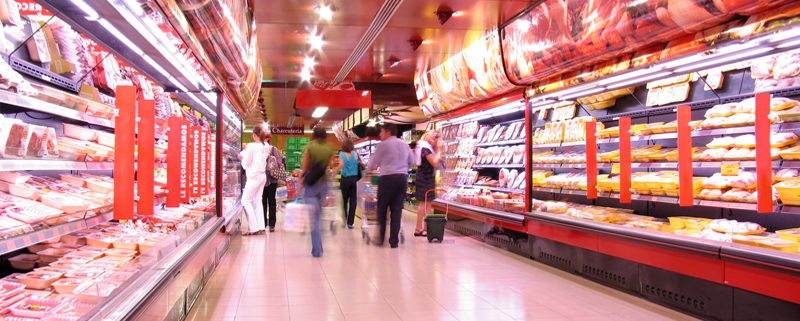In December, the interannual rate of the Consumer Price Index (CPI) reduced its decrease by three tenths and stood at -0.5%, accumulating negative nine months. Inflation remains negative due to falls in the prices of energy products and the slowdown in the underlying.
Thus, core inflation continues its deceleration path and stands at 0.1%, one tenth less than the previous month. Analyzing their components, it is observed that they remain at very low rates, even some in the vicinity of 0%. The prices of services reduced their variation by two tenths to -0.1%, the prices of industrial goods without energy products increased their rate of change by one tenth to 0.1%, and processed foods, beverages and tobacco increased their interannual variation by one tenth to 0.9%.
The prices of unprocessed foods also show a more moderate growth, reducing their rate of change by six tenths to 1.4%, although they continue to be the most inflationary component of the basket, with the most intense increases concentrated in the headings of fresh, sheep meat and other meats.
Energy prices slow down their rate of decline in December. Specifically, the interannual rate in this month of the prices of energy products was -6.2%, compared to -9.5% in the previous month, and this trend of lessening of the fall is expected to continue in the next months.
In December, the price of Brent crude oil continued to rise to 50.2 dollars / barrel on average, driven by the production agreements by OPEC + and the good prospects for a recovery in demand generated by vaccines. Even so, the price was -27.3% lower than a year ago, measured in dollars, and -33.6% lower in euros, due to the appreciation of the European currency in the last year. Futures prices are trading at a crude price of around $ 55 / barrel for 2021, up from $ 45.1 / barrel in 2020, so they will no longer have a bearish effect on inflation.
The Harmonized Consumer Price Index increased two tenths in December, to -0.6%, and the average index for the Economic and Monetary Union remained at -0.3%, according to the Eurostat advanced indicator. Thus, the negative differential with the euro zone stands at three tenths and has already lasted for more than two years.
In the year 2020 as a whole, the average CPI rate has been -0.3%. Looking ahead to the coming months, inflation will be conditioned by the behavior of oil prices and the drop in demand for some goods and services derived from the coronavirus crisis. In any case, it can be said that we are in a situation of price stability without inflationary pressures.
In this context of weak demand, final prices continue to fall at the same time that companies must continue to assume increases in production costs, so their margins are being sharply reduced.



